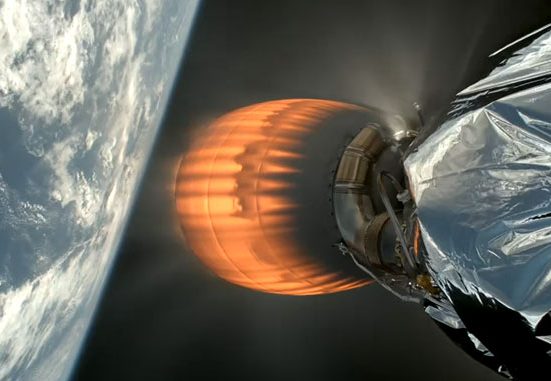In about five billion years, our Sun will exit its main sequence phase and enter its red giant phase. At this point, the Sun will expand and consume the planets of the inner Solar System, including Mercury and Venus. What will become of Earth when this happens has been a topic of debate for many decades. But with the recent explosion of exoplanet discoveries, 5,759 confirmed on 4,305 systems So far, astronomers hope to learn more about how planets fare as their stars approach the end of their life cycle.
Using the 10 meter telescope in the Keck Observatory In Hawaii, an international team of astronomers discovered a Earth-like planet orbiting a white dwarf star 4,000 light years from Earth. This planet orbits its star, about half the mass of our Sun, at a distance about twice that of Earth today. The system looks like what our system is expected to look like once the Sun has used up the last of its fuel and sheds its outer layers in a supernova. It also offers some assurance that the Earth will survive the Sun becoming a red giant and exploding in a supernova.
The team was led by Keming Zhanga former PhD student at the University of California, Berkeley, who is now an Eric and Wendy Schmidt AI Postdoctoral Fellow in Science at UC San Diego. He was joined by several colleagues from UC Berkeley, UC San Diego, Tsinghua University, the Harvard & Smithsonian Center for Astrophysics (CfA), the California Institute of Technology (Caltech), the University of Washington, the Ohio State University and the University of Maryland. and NASA's Goddard Space Flight Center. The article detailing their findings recently appeared in the journal Nature Astronomy.
To break it down, the Sun's expansion into becoming a red giant will likely mean the destruction of Mercury and Venus. At the same time, the Sun's decreasing mass will force surviving planets to migrate to more distant orbits, which could include Earth. If Earth survives when the Sun finally goes supernova, it will likely end up orbiting the resulting white dwarf remnant at a distance of 2 astronomical units (AU), twice its current distance. As Zhang related in a Press release from the University of California at Berkeley,
“We currently do not have a consensus on whether the Earth could avoid being engulfed by the red giant Sun in 6 billion years. In any case, planet Earth will only be habitable for about another billion years, at which point Earth's oceans would be vaporized by the runaway greenhouse effect, long before it risks being swallowed by the red giant. ”.
This is what astronomers may have discovered when they observed this planetary system about 4,000 light years away. Located near the bulge at the center of our galaxy, this system was first noticed in 2020 when it passed in front of another star located 25,000 light years from Earth. This triggered a microlensing event, where the white dwarf's powerful gravity focused and amplified the background star's light by a factor of 1,000. The event was first detected by the Korea Microlensing Telescope Network (NMTNet) in the southern hemisphere, leading the team to designate it KMT-2020-BLG-0414.
The team estimated that the system included a star about half the mass of our Sun, an Earth-sized planet, and a probable brown dwarf with 17 times the mass of Jupiter. The analysis also concluded that the Earth-sized planet orbited its star at a distance of between 1 and 2 AU. At the time, it was difficult to identify the type of star because its light was obscured by neighboring stars and the magnified star in the background. By 2023, the lensing event had passed, making it possible for the team to examine the lensing system more closely using the 10-meter Keck II telescope in Hawaii.
As Zhang noted, the team took two separate images but detected nothing. Since the lens star was dark and low mass, they concluded that it could only be a white dwarf. As noted, scientists are not sure what will happen to Earth when it reaches its red giant phase or whether it will survive to orbit the white star remnant. This planetary system provides an example of a planet that survived its sun by expanding and exploding in a supernova. However, there is little chance of it being habitable as it orbits beyond the white dwarf's habitable zone.

What's more, some research suggests that if the expanding Sun doesn't envelop our planet, it will eventually destroy our atmosphere and vaporize Earth's oceans. Said co-author Jessica Luassociate professor and chair of astronomy at UC Berkeley:
“It is unknown whether life can survive on Earth during that (red giant) period. But certainly the most important thing is that the Earth is not swallowed by the Sun when it becomes a red giant. “This system that Keming found is an example of a planet (probably an Earth-like planet originally in an Earth-like orbit) that survived the red giant phase of its host star.”
Additionally, Zhang and his colleagues resolved an ambiguity about the brown dwarf's location. According to the original analysis, the brown dwarf had a very wide orbit, similar to that of Neptune or Mercury. In the latter case, this would make it a hot brown dwarf, similar to the many “hot Jupiters” repeatedly observed beyond our Solar System. Zhang and his colleagues could rule out the latter scenario, since a brown dwarf in nearby orbit would have burned up once the star entered its red giant phase.
This ambiguity was the result of “microlensing degeneration,” where two different lens configurations can give rise to the same lensing effect. Fortunately, Zhang and co-author Bloom discovered a similar degeneration. in 2022 using a machine learning algorithm designed to analyze microlensing simulations. When they applied the same technique to KMT-2020-BLG-0414, they were able to rule out alternative models of the planetary system. How to bloom explained:
“Microlensing has become a very interesting way to study other star systems that cannot be observed or detected by conventional means, that is, the transit method or the radial velocity method. “There are a whole series of worlds that are now opening up to us through the microlensing channel, and the exciting thing is that we are on the verge of finding exotic configurations like this.”

This system offers many opportunities for follow-up observations using next-generation telescopes such as the Nancy Grace Roman Space Telescope (RST), scheduled to launch in 2027. One of the main goals of the RST is to measure the light curves of microlensing events to find exoplanets. “What is required is careful follow-up with the best facilities in the world, namely adaptive optics and the Keck Observatory, not just a day or a month later, but many, many years in the future, after the lens has moved away from the target. star in the background so you can start to disambiguate what you’re seeing.” saying Bloom.
The findings would seem to confirm another theory about the fate of our Solar System. When the Sun expands, the habitable zone of our system will migrate to the outer Solar System. If humanity still exists at this time, it will need to migrate to the icy satellites orbiting Jupiter and Saturn, which will likely become planets covered in deep oceans, giving new meaning to the words “ocean worlds.”
Additional reading: Berkeley News, Nature Astronomy













Leave feedback about this